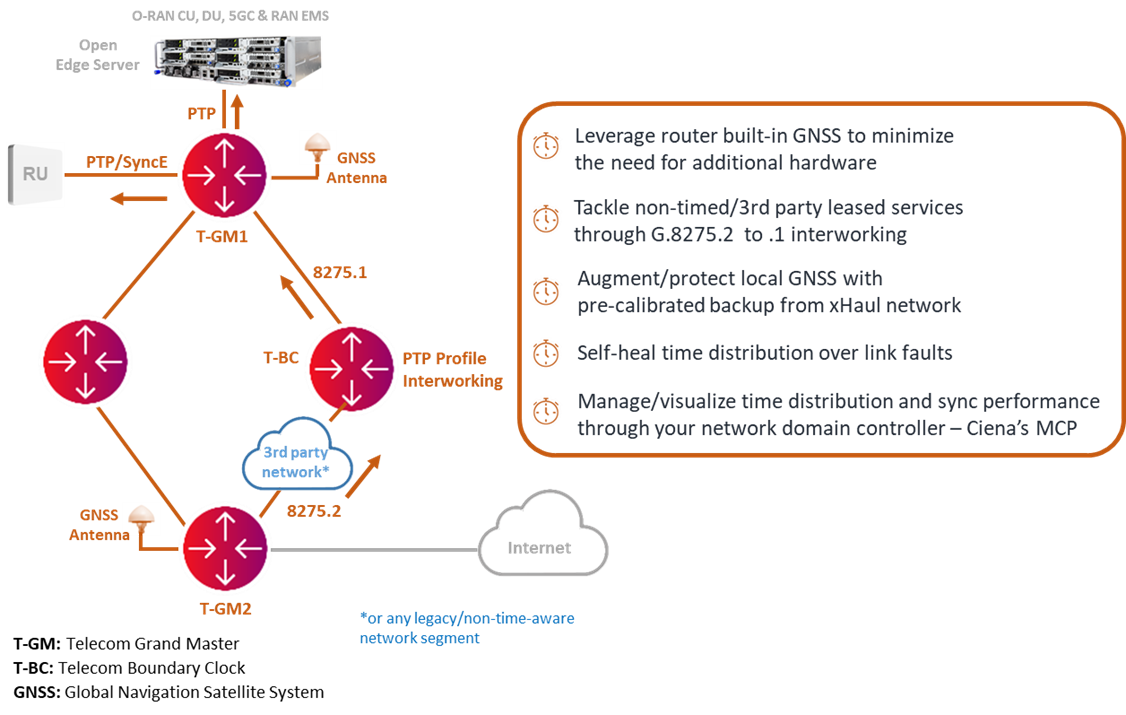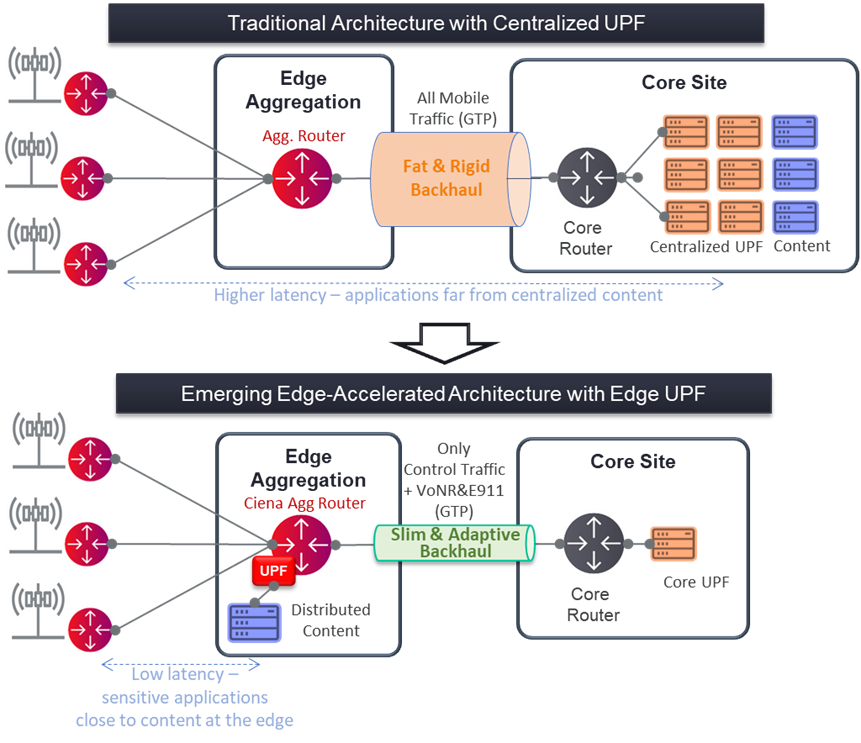Evolving 5G xHaul transport networks: Three burning issues from operators
After an initial phase of 5G deployments, network operators are turning their priorities towards efficiency and performance enhancements, inaugurating a new cycle in 5G network evolution. Open, centralized, and virtualized architectures that have been discussed for years are finally taking off, adopted in combination with more advanced Radio Access Network (RAN) tools and techniques and driving new xHaul (fronthaul, midhaul, backhaul) transport requirements.
In the last couple of months, I’ve had the opportunity to talk to many operators about their key transport concerns and priorities, across trade shows, technology demonstrations, and roadmap sessions. Besides the obvious need for more bandwidth to support enhanced 5G data rates, here are three transport insights from operators that mustn’t be overlooked.
1) Timing and Synchronization is a burning issue
In 5G systems, accuracy in frequency, phase, and time synchronization is required for optimal RAN performance. Operators are eager to leverage network timing distribution across their transport infrastructure to complement local Global Navigation Satellite System (GNSS) at cell sites, yielding a more robust RAN architecture.
The accuracy and resilience challenges are further spiced by the need to minimize investments (the days of dedicated timing distribution hardware are over), deal with legacy non-time-aware or third-party network segments, and be able to manage it in a fully integrated manner.
We recently welcomed customers to our R&D labs in Ottawa, Canada, to show some of our latest xHaul portfolio advancements and discuss upcoming innovations. Timing and synchronization was without question the hottest area of interest in 5G. As we showcased a simple and effective approach to deploying and managing the timing distribution across a 5G network, including G.8275.2 to G.8275.1 interworking and Assisted Partial Timing Support (APTS/G.8273.4) and Ciena’s submitted pre-standard Assisted Full Timing Support (AFTS) failover schemes, operators were eager to learn more and enthusiastic about the advanced timing capabilities our extensive xHaul router portfolio has to offer.
A highly-praised feature was the ability to easily visualize and manage timing and synchronization using Ciena’s MCP, the very same domain controller through which customers do their multi-layer network management.

Figure 1: An approach to building an efficient, resilient, and self-healing time/sync distribution network
2) Edge Acceleration – better performance, higher efficiency
Delivering lower latency and higher speeds to edge applications is at the essence of 5G’s promise. To enhance the performance of their services at the edge while increasing the efficiency of their network, operators are looking at leveraging Control/User Plane Separation (CUPS).
Pushing the User Plane Function (UPF) closer to the edge allows latency-sensitive applications and cacheable content to be processed locally and breakout to the internet to happen earlier, reducing latency and minimizing the required aggregation bandwidth.
CUPS efficiency can be taken further by leveraging the transport network’s excess compute power, by deploying the UPF using the existing high-throughput and low-power forwarding ASICs of our xHaul routers. This innovative architecture radically simplifies operations, removing the cumbersome and time-consuming efforts of configuring power-hungry x86 servers to host distributed user planes, and minimizes hardware costs by sharing transport resources with scalability and resiliency.
Customers who recently visited our labs were able to see a physical UPF implemented over a Ciena 8112 Coherent Aggregation Router. At the same time that the device was routing the traffic from multiple cell sites and serving concurrent active RANs, it had a fully operational 3GPP-compliant UPF instance implemented over its ASIC, with its performance demonstrated using Keysight’s Loadcore testing solution. This capability made clear that the xHaul network can add value to the RAN’s performance and efficiency beyond basic transport functions.

Figure 2. Physical UPF implemented over an 8112 Coherent Aggregation Router for lower latency and cost
3) Flexibility to adapt and support the RAN evolution is a key design driver
Transport flexibility continues to be top of mind for mobile operators. Transport networks’ ability to adapt to new requirements and thus enable RAN evolution is seen as critical in the search for better performance at lower costs. Operators are especially looking for high 10GbE (or up to 25GbE) port densities to accommodate new spectrum introduction, all in compact and energy-efficient platforms to minimize power and space in dense cell site environments.
Slicing readiness is also mentioned as critical to pave the way to future end-to-end slicing deployments. Openness of transport platforms and versatility to support any combination of fronthaul/midhaul/backhaul – and preferably the ability to converge even non-mobile traffic in the same router – are also factors identified by many as highly valuable to future-proof their transport designs.
At Ciena, since we launched our 5G xHaul Router portfolio, adaptability and flexibility have been at the center of our value proposition.
Dig deeper on the future of 5G xHaul transport networks
There’s still a lot to come on 5G, and transport networks will certainly be challenged in multiple ways to help drive this evolution. Setting up an adaptive xHaul network capable of efficiently delivering the transport requirements of today and tomorrow is essential for operators, allowing them to maximize their choices and innovation possibilities, accelerate their RAN evolution, and deliver enhanced performance while capturing the benefits of optimized investments and operations.








